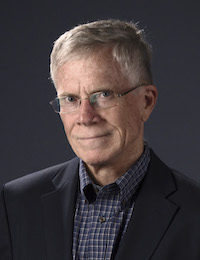Veteran L.A. Times journalist makes an appeal to the Japanese American community.
By P.C. Staff

Paul Richter
Writer Paul Richter is looking to interview present-day Japanese Americans about their forebears who emigrated from Japan and settled along the West Coast. The reason: He is writing a book for publisher Simon & Schuster about late-19th century-early 20th century Japanese immigration to the United States.
According to Richter, who covered the State Department for the Los Angeles Times, Japanese people who began arriving on the West Coast around 1890 soon faced a powerful “exclusion movement” — especially in California — that sought to “halt immigration and bar them from the mainstream economy. Both the Issei and Nisei faced discrimination in jobs, housing and public services.”
Now, more than a century later, he hopes today’s Japanese Americans will share what they know of their family lore, experiences and what might be preserved in family letters and papers for his yet-to-be titled book.
To Richter, who lives in the Washington, D.C., area and whose State Department beat covered the period from the Sept. 11, 2001, terrorist attacks until 2015, when he accepted the buyout the Los Angeles Times was then offering its employees, the period of Japanese immigration to America is one that deserves greater attention in the 21st century.
“I think it’s really an important piece of history,” Richter told the Pacific Citizen, “and it’s one that people don’t know a lot about.” He noted, for example, that President Theodore Roosevelt was greatly concerned with the harsh laws and conditions that early Japanese immigrants in California faced.
The backdrop to Roosevelt’s concerns: It was also a time of rising Japanese expansionism, militarism and imperialism, with Japan having defeated Russia in the Russo-Japanese War of 1904-05.
Japan’s victory came as a shock to Western powers, many of which had for centuries conquered and colonized much of the nonwhite world unabated. For the first time since the height of the Mongol empire in Eurasia, an Asian power had prevailed against a European power.
According to Richter, “It was a real worry for Teddy Roosevelt because he was afraid we were going to get drawn into a war with Japan.” Because the Issei were Japanese citizens whose safety the Japanese government was obligated to protect, the harsh treatment “became a big international issue.”
“In both 1908 and 1913, we almost got drawn into a war with Japan,” Richter noted. “And, of course, the Japanese government had a big navy then; they were a formidable force.”
Despite the laws and policies that prevented the Issei from becoming naturalized U.S. citizens or joining certain professions, Japanese immigrants who worked in agriculture managed to thrive, even when they were precluded from purchasing farmland. According to Richter, however, Issei successes occurred in a fraught era.
“This whole period … was of major ethnic conflict, and it kind of lasted through the ’30s and laid the groundwork for the incarceration period during the war,” he said. “So, I just thought this was really important piece of California history, of American history.”
History doesn’t necessarily repeat itself, but similar patterns can arise. In 2023, Japan and the United States are staunch international allies and can vie for national pride on a baseball diamond instead of engaging in armed conflict.
Also in 2023: The anti-Japanese sentiments of decades past in America have morphed into anti-Chinese rhetoric as a bellicose and expansionist China challenges the international order amid a pandemic caused by a virus that originated there — and helped fuel a spike in anti-Asian violence here.
For those and other reasons, Richter felt it was time to re-examine history — and put a human face on it.
“One thing that I felt was missing was a good book that told the story from the viewpoint of the [Japanese] immigrants themselves and their children and their families,” he said. “That’s kind of the focus that I’m going to bring it.”
Richter says it will take a couple of years to complete the book, but he knows it is a story that is relevant and worth telling.
“Japanese immigrants were one of the groups that most took to American ideals and [were] so well-suited to prosper in America,” said Richter. “And yet, there was an ugly coincidence of disasters that that befell them in California. One of the history books says that, you know, they came to the wrong state at the wrong time. … there was such challenges for the Issei and the Nisei.”
Richter’s first book was 2019’s “The Ambassadors: America’s Diplomats on the Front Lines,” also published by Simon & Schuster. In it, Richter relayed “true-life stories of four expeditionary diplomats who ‘do the hardest things in the hardest places.’” Via this second book with the publisher, he hopes to put his journalistic skills to use to share the largely unknown but still relevant story of the first Japanese in America with today’s audiences.
(Editor’s note: Those interested in the possibility of contributing family stories and artifacts of first-generation Japanese immigrants to Paul Richter’s upcoming book may reach out to the author via email at goldenlandbook@gmail.com.)



